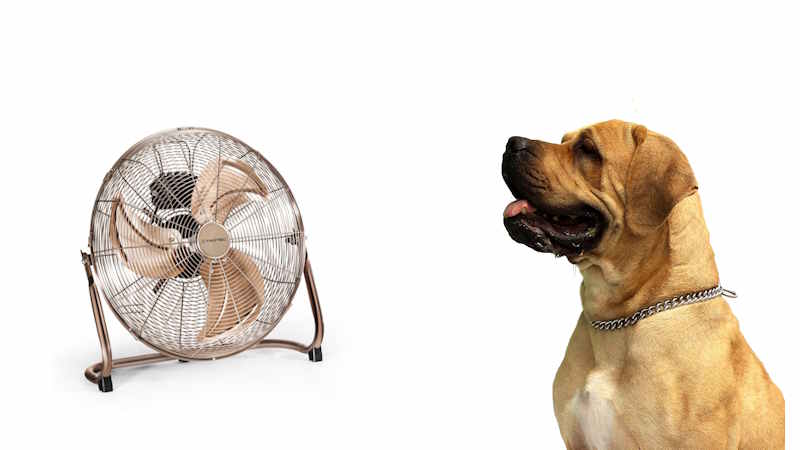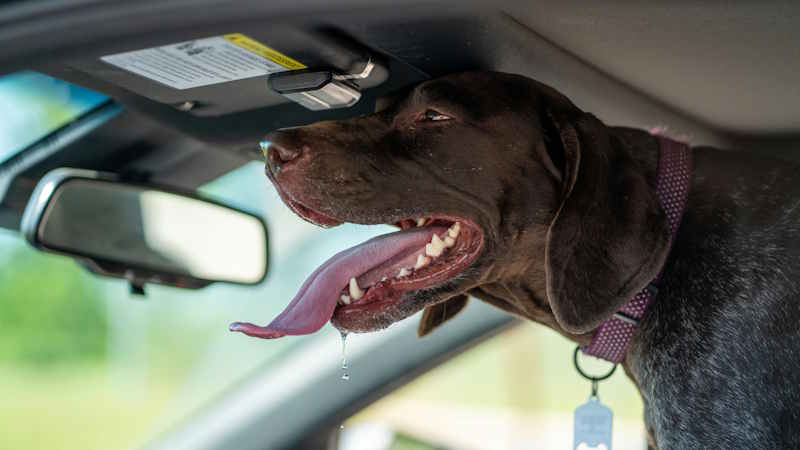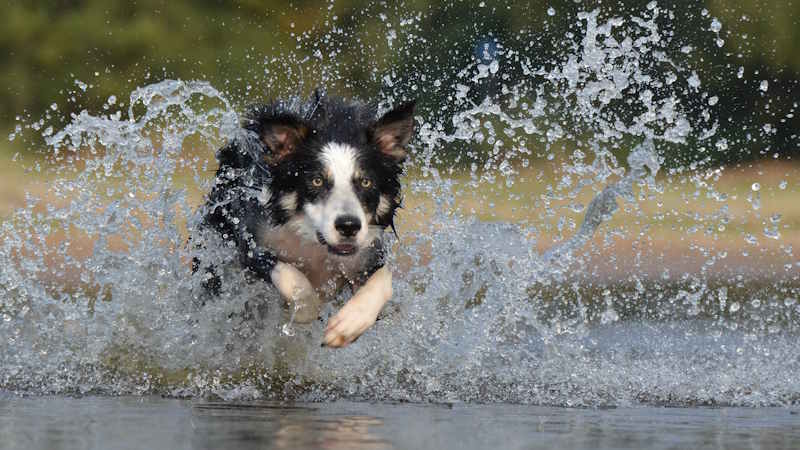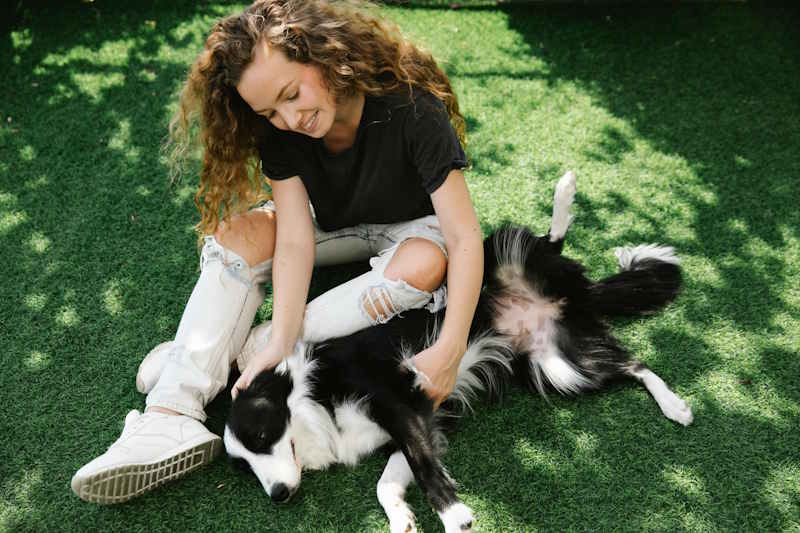
Hot weather can be a real danger to dogs. They don’t sweat like humans do, and their ability to cool down is limited. That means summer heat can go from uncomfortable to life-threatening fast. But the good news? You can protect your dog from the heat with some smart, simple choices.
This guide walks you through what to do—and what to absolutely avoid—so your pup stays safe, happy, and cool.
Know When It’s Too Hot to Be Outside
Heat affects dogs faster than we think.
If the pavement is too hot for your hand, it’s too hot for their paws. Dogs absorb heat through their pads, and walking on scalding sidewalks can burn them within minutes. Even shaded areas can become risky when the air temperature climbs past 30°C (86°F).
Signs it’s time to stay indoors:
- The sun feels intense on your skin.
- Humidity makes it hard to breathe.
- Your dog is panting harder than usual after just a short walk.
Use early mornings or evenings for outdoor activities. Stick to grassy paths or dirt trails. And skip outings altogether during heatwaves.
Never Leave Your Dog in a Parked Car

Even with the windows cracked, cars become ovens in minutes.
Leaving your dog in a parked vehicle—even “just for a minute”—can be fatal. Temperatures can skyrocket by over 20°C in ten minutes. Dogs can’t open windows or call for help. Their only hope is you not making this mistake.
Cracked windows don’t help. Parking in the shade doesn’t help. Quick errands turn into tragedies. Don’t gamble with your dog’s life.
If you wouldn’t sit in the car wearing a coat, your dog shouldn’t either.
Hydration Isn’t Optional—It’s Survival

Dehydration sneaks up on dogs faster than you’d expect.
Dogs don’t drink unless they feel thirsty, but by the time they do, they’re already behind. Always carry water on walks. Use collapsible bowls or special dog bottles. Offer small amounts frequently.
Watch out for:
- Thick, ropey saliva
- Dry gums
- Lethargy or wobbling
These aren’t just heat signs—they’re red flags. Move them to shade. Offer cool (not ice-cold) water. If symptoms don’t improve, head to the vet immediately.
Avoid Hot Pavement and Artificial Turf
Your dog’s paws aren’t built for hot surfaces.
Asphalt, cement, and even fake grass can hit skin-searing temperatures during summer. You wouldn’t walk barefoot across hot gravel—don’t expect your dog to.
Test the pavement with your hand. If you can’t hold it there for five seconds, don’t walk your dog on it.
Better walking alternatives:
- Grassy parks
- Forest trails
- Dirt paths
Invest in booties if hot surfaces can’t be avoided, but remember—they trap heat too. Keep walks short and always check paws after.
Shade Isn’t a Luxury—It’s a Lifeline

Direct sun exposure can be dangerous, even in short bursts.
Dogs with short snouts (like pugs or bulldogs), older dogs, and puppies are especially vulnerable. But any dog, regardless of breed, can overheat quickly under direct sunlight.
Set up a shady space outside:
- Use large umbrellas
- Create a canopy with fabric
- Build a small shelter with airflow
If shade isn’t available, don’t leave your dog outside. Indoors with fans or AC is far safer.
Don’t Overdo Exercise in the Heat
Dogs won’t always stop when they should.
They’ll chase balls, run after sticks, and follow your lead—even when their bodies are overheating. It’s your job to slow things down.
Avoid high-intensity play during peak heat hours. Short walks and sniffing sessions work better. Swimming is a fantastic way to keep active and cool, but supervise closely.
Good warm-weather activities:
- Gentle fetch in the early morning
- Puzzle toys indoors
- Backyard sprinkler play
Skip long hikes, running, or frisbee marathons. Save those for cooler seasons.
Know the Signs of Heatstroke in Dogs
Heatstroke can be fatal—fast.
It starts with heavy panting. Then the tongue turns bright red or purple. Your dog may stagger, drool excessively, or collapse.
Other warning signs:
- Vomiting
- Glazed eyes
- Rapid heartbeat
- Confusion or seizures
Act immediately. Move them to shade or indoors. Wet their fur with cool water (never ice). Place a fan nearby. Call your vet—don’t wait.
Heatstroke is an emergency. Even if your dog seems to recover, organ damage might already be happening inside.
Skip the Summer Haircuts (Yes, Really)
It’s tempting to shave off thick fur during a heatwave.
But that coat serves a purpose. It insulates against both heat and cold. Shaving it can increase the risk of sunburn and overheating.
Instead, brush regularly to remove loose undercoat. This helps air circulate and reduces heat retention.
If your dog has a double coat (like a Husky or Golden Retriever), leave the fur alone. Trim only the areas your groomer recommends—typically around paws or sanitary zones.
Don’t Rely on Fans Alone Indoors
Fans move air—they don’t lower temperature.
While we sweat and cool down under a fan, dogs don’t work that way. They rely on panting. A fan might keep you cool, but for your dog, it might just blow hot air.
Keep them inside where air conditioning or ventilation is consistent. Cooling mats or frozen water bottles wrapped in towels offer better comfort. So do tile floors and damp cloths under their belly.
Avoid Overcrowded Places
Dogs overheat faster in busy areas with limited airflow.
Crowded beaches, festivals, or markets might seem like fun family outings—but for dogs, they can become stress zones. Add the heat, and things get dangerous quickly.
Skip non-essential trips in summer. Stay home, play in the yard, or go for quiet early-morning walks instead.
Use Cooling Accessories—But Use Them Right
Cooling vests, mats, and bandanas can help, but they’re not magic.
They work best when paired with shade, hydration, and low activity. You’ll need to recharge or re-wet them often. And some dogs don’t tolerate the feeling.
What actually helps:
- Cooling mats for naps on the floor
- Chilled bandanas during short outings
- Frozen treats like fruit-filled ice cubes
Use these tools wisely. Don’t assume they replace common sense or safe practices.
Things You Should Never Do
These mistakes cost lives every summer.
Avoid at all costs:
- Leaving dogs outside for long periods without shade or water
- Forcing exercise in midday sun
- Putting ice directly on their skin (it shocks the system)
- Letting them drink from stagnant water or puddles (risk of bacteria)
- Locking them in small, unventilated rooms
Dogs rely on you to make the safe call. They can’t say “I’m too hot” or ask for water. It’s your job to act first.
Final Thoughts: Keep It Simple, Keep It Safe
Summer doesn’t have to be stressful for dog owners.
To protect your dog from the heat, start by changing the way you think about warm weather. It’s not about doing less with your dog—it’s about doing the right things at the right time.
Watch the temperature. Keep them hydrated. Choose shade over sun. Skip anything that doesn’t feel safe.
The reward? A happy, healthy dog by your side—all season long. And that’s worth every small adjustment.
Summary Checklist to Protect Your Dog from the Heat:
- Walk during cooler parts of the day
- Provide constant access to water
- Never leave them in parked cars
- Keep them indoors when it’s too hot
- Use shade, not just fans
- Recognize signs of heatstroke
- Avoid over-exercise
- Maintain their coat (don’t shave)
- Use cooling tools with care
- Avoid crowded, poorly ventilated places
Your dog gives you everything. This summer, give them the gift of safety. 🐾